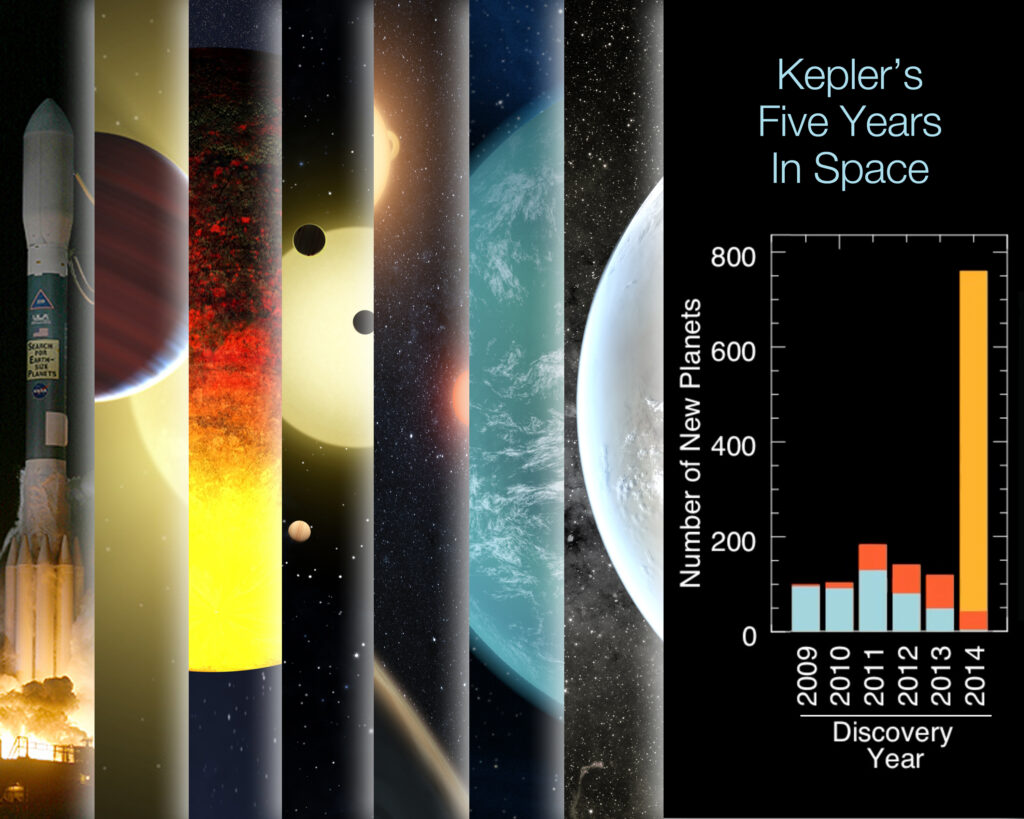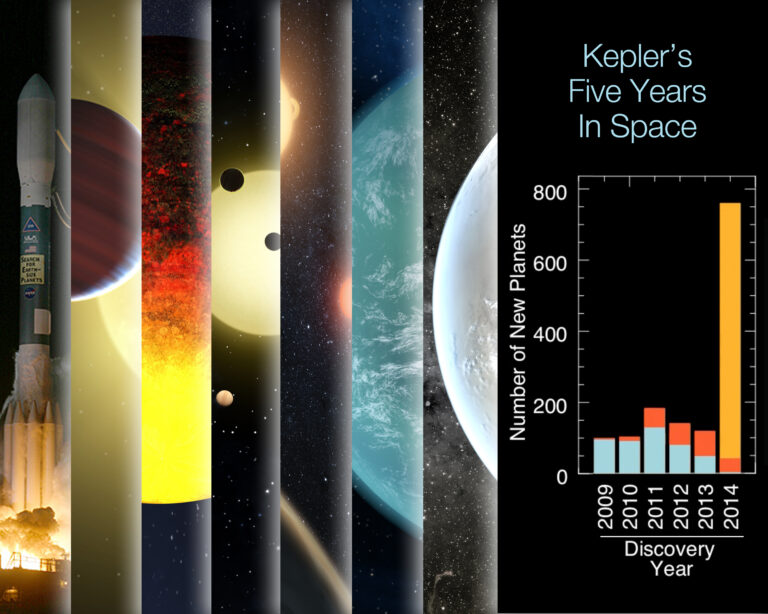Kepler Celebrates its Fifth Anniversary in Space
On March 6, 2009, NASA’s Kepler Space Telescope was launched into the night sky above Cape Canaveral Air Force Station in Florida. Its mission was to search for exoplanets, planets that orbit other stars, in the hopes of finding potentially habitable worlds.Over the past five years, Kepler has revolutionized our understanding of the galaxy. It has revealed that most stars have planets and that Earth-sized planets are quite common. Additionally, Kepler has discovered planets that are unlike anything in our own solar system.
By analyzing the data collected by Kepler, scientists have identified over 3,600 potential planets, with 961 of them being confirmed as actual planets. Many of these planets are as small as Earth. In fact, Kepler’s discoveries now account for more than half of all known exoplanets.
According to William Borucki, the principal investigator of the Kepler mission, the results obtained over the past five years have provided crucial information for future missions. These missions aim to determine the atmospheric composition of Earth-sized exoplanets and assess their potential habitability.Among Kepler’s findings are planets that orbit within the habitable zone, the region around a star where conditions may be suitable for liquid water to exist. One notable example is Kepler-22b, a planet 2.4 times the size of Earth. However, scientists believe it is too large and not rocky enough to support life. Other habitable zone planets, such as Kepler-62f, which is 40 percent larger than Earth, may have a higher chance of being rocky and potentially habitable.

A planet identical to Earth in terms of temperature and size has not yet been found, but scientists are still analyzing the Kepler data in search of any indications of such a planet.The Kepler mission has also made other significant discoveries, including the identification of numerous star systems with multiple planets. Additionally, it has revealed a new type of planetary system where planets orbit more than one sun.
Unfortunately, in August of last year, the mission had to conclude its scientific observations due to a malfunctioning reaction wheel that affected the telescope’s precision. However, there is a possibility that the mission could continue operating in a different mode and continue conducting scientific research. NASA will evaluate a proposal for the next-generation mission, known as K2, for potential funding during the 2014 Astrophysics Senior Review of Operating Missions.
This article is republished from PhysORG under a Creative Commons license. Read the original article.
Do not forget to share your opinion with us to provide you with the best posts !




0 Comments